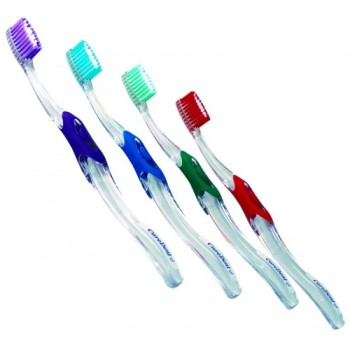Introduction: Hooked Toothbrush
I created a hooked handle for my toothbrush by heating a polypropylene toothbrush over an electric stove and bending it around a bottle neck. Making your own hooked toothbrush is easy!
Here's what you need:
tools:
| materials:
|
Step 1: Toothbrush Bending
- turn heating element on high
- prepare an ice bath using a large bowl filled 2/3 with water and fill with ice cubes, set aside
- put on thick work gloves to protect your hands from the heat
-
when element is hot, slowly rotate toothbrush handle over element
DO NOT TOUCH TOOTHBRUSH TO ELEMENT - after about 20 seconds the toothbrush handle will become soft and pliable
- wrap handle around mandrel to create desired hook shape, hold in place for 10 seconds
- submerge hooked handle into ice bath and let sit for another 10 seconds
- repeat steps 4-7 to refine the curve if required

Step 2: Further Reading: Types of Plastic
Polypropylene (PP) toothbrush
 | Styrene Acrylonitrile (SAN) toothbrush
 |
Step 3: Further Reading: How NOT To
My first attempt to make these hooked toothbrushes followed this Instructable on how to make a toothbrush bracelet which involves using boiling water to create a large radius bend in a toothbrush. After boiling my toothbrushes for about 10 minutes I removed them with kitchen tongs and bent the toothbrush handle around a mandrel to create a small radius bend in the handle. Unfortunately the bend radius I wanted was too small and I snapped all my toothbrushes.
The boiling method may be good for making bracelets (wide radius curve) but doesn't work so well for making hooked toothbrushes (small radius curve).
Step 4: Final Thoughts
The hooked toothbrush works well and is really fun to use. A minor complaint would be that the handle is a little short, allowing only 2-3 of my fingers to grip the handle. This isn't a big deal as it's not uncomfortable and you don't really need to have all four fingers on your toothbrush anyway.
Have you made your own hooked toothbrush? Share your thoughts below
Happy making :)

Participated in the
Fix & Improve It Contest

Participated in the
Hurricane Lasers Contest













